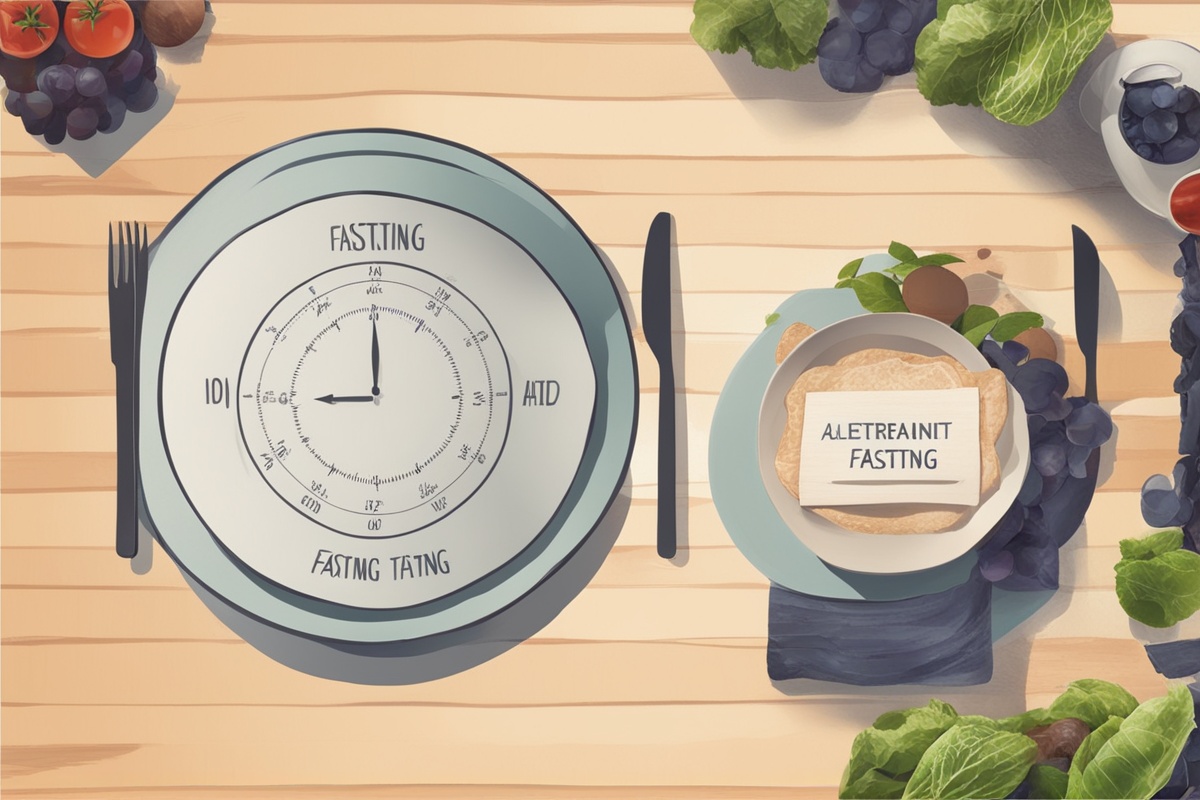Have you ever wondered if there’s a sustainable way to lose weight, improve your health, and boost your energy without feeling deprived every single day? If so, alternate day fasting might just be the game-changer you’ve been searching for. This unique approach to intermittent fasting has gained popularity for its flexibility and promising results. Unlike traditional diets that require constant calorie counting, alternate day fasting (ADF) alternates between feast and fast days, offering a rhythm that many find easier to stick with. In this comprehensive guide, we’ll dive into what ADF is, how it works, its science-backed benefits, and practical tips to make it work for you. Whether you’re new to fasting methods or a seasoned pro, let’s explore how this strategy can transform your health journey.
What Is Alternate Day Fasting?
At its core, alternate day fasting is a type of intermittent fasting where you alternate between days of normal eating and days of severe calorie restriction or complete fasting. On fasting days, you either consume no calories or limit yourself to around 500–600 calories (often referred to as a modified fast). On feast days, you eat normally without strict restrictions, though focusing on nutritious foods is always a good idea. This pattern creates a cycle that can help reduce overall calorie intake while giving your body periodic breaks from digestion, potentially leading to weight loss and other health benefits. ADF stands out from other fasting regimens like the 16:8 method because it focuses on entire days rather than specific eating windows.
The Science Behind Alternate Day Fasting
Why does alternate day fasting work for so many people? The answer lies in the body’s response to periodic calorie restriction. Research shows that ADF can trigger a metabolic switch, encouraging your body to burn stored fat for energy during fasting periods. Studies, such as those published in the journal Obesity, have demonstrated that ADF can lead to significant weight loss—often 3–8% of body weight over 8–12 weeks. Beyond weight management, ADF may improve insulin sensitivity, lower blood pressure, and reduce inflammation markers, all of which are crucial for preventing chronic diseases like diabetes and heart disease. Additionally, fasting periods promote autophagy, a cellular cleanup process that may slow aging and enhance overall health. While more long-term studies are needed, the early evidence for ADF is promising for those exploring intermittent fasting benefits.
Key Benefits of Alternate Day Fasting
One of the reasons alternate day fasting has a growing fan base is its wide range of potential benefits. It’s not just about shedding pounds; ADF can positively impact various aspects of your physical and mental well-being. Here are some standout advantages that make this fasting style worth considering:
- Weight Loss: By naturally reducing calorie intake over the week, ADF helps create a deficit that promotes fat loss without constant hunger.
- Improved Metabolic Health: ADF can enhance insulin sensitivity and stabilize blood sugar levels, reducing the risk of type 2 diabetes.
- Heart Health: Studies suggest ADF may lower LDL cholesterol and blood pressure, supporting cardiovascular wellness.
- Simplicity: Unlike complex diets, ADF has a straightforward structure—fast one day, eat the next—which can be easier to follow.
- Cellular Repair: Fasting triggers autophagy, helping your body clear out damaged cells and potentially slow aging.
Potential Challenges and How to Overcome Them
While alternate day fasting offers impressive benefits, it’s not without its hurdles. Some people find fasting days tough, especially in the beginning. Hunger, irritability, and fatigue are common complaints when starting ADF. Social situations, like dinners or parties, can also clash with fasting days, making you feel left out. However, with a little planning, these challenges can be managed. Start by easing into ADF with a modified fast (500 calories) instead of a full fast. Stay hydrated and busy on fasting days to distract from hunger pangs. If social events fall on fast days, consider swapping days or sipping on low-calorie drinks like black coffee or herbal tea to stay engaged without breaking your fast. Remember, consistency matters more than perfection when adopting fasting for weight loss.
Practical Tips for Success with Alternate Day Fasting
Ready to give alternate day fasting a try? Setting yourself up for success is key to making this lifestyle sustainable. It’s not just about willpower; it’s about creating a system that fits your life. Below are actionable tips to help you thrive with ADF and avoid common pitfalls:
- Plan Your Meals: On feast days, prioritize protein, fiber, and healthy fats to stay full longer and prevent overeating.
- Stay Hydrated: Drink plenty of water, especially on fasting days, to curb hunger and support your body’s functions.
- Start Slow: If you’re new to fasting, begin with one or two fasting days per week before jumping into full ADF.
- Listen to Your Body: If you feel dizzy or overly fatigued, adjust your fasting intensity or consult a healthcare provider.
Who Should Try Alternate Day Fasting?
While alternate day fasting can be a powerful tool for many, it’s not a one-size-fits-all solution. It’s best suited for adults who are generally healthy and looking to lose weight or improve metabolic markers. However, ADF may not be appropriate for everyone. Pregnant or breastfeeding women, individuals with eating disorders, or those with certain medical conditions like low blood sugar should avoid fasting without medical supervision. If you’re on medication or have a chronic illness, consult your doctor before starting any intermittent fasting plan. The beauty of ADF is its adaptability—you can tweak it to match your needs, but safety always comes first. Remember, fasting is a tool, not a punishment, so ensure it aligns with your personal health goals.
In conclusion, alternate day fasting offers a refreshing and effective approach to achieving weight loss and better health without the monotony of daily restrictions. By cycling between fasting and feast days, you can tap into your body’s natural fat-burning potential while reaping benefits like improved insulin sensitivity and heart health. Though it comes with challenges like hunger or social scheduling, the practical tips and flexibility of ADF make it a viable option for many. Whether you’re curious about fasting diets or looking to shake up your routine, ADF could be the key to unlocking a healthier you. Start small, stay consistent, and listen to your body as you embark on this journey. Have you tried ADF, or are you considering it? Drop your thoughts or questions below—I’d love to hear from you!






